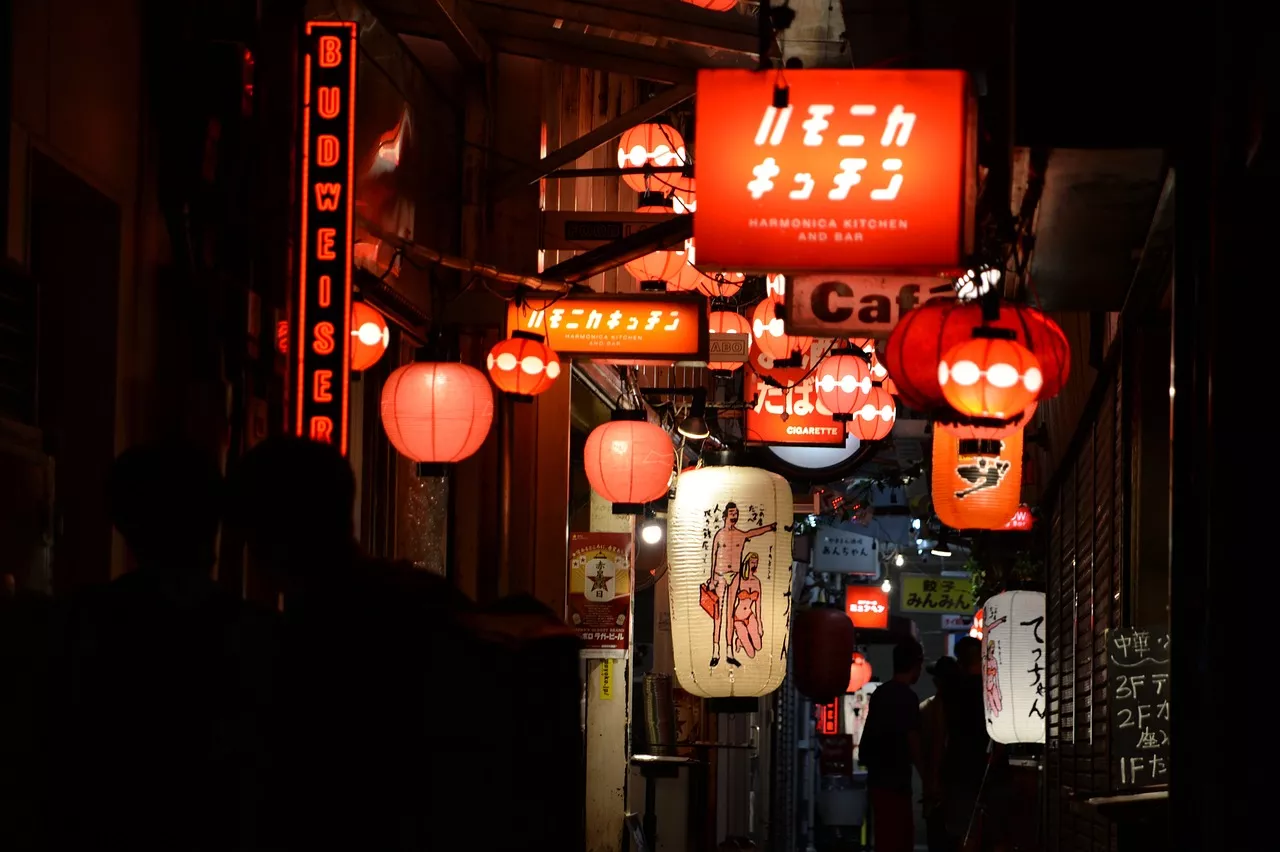What are izakayas?
Izakayas are traditional Japanese pubs that have been an integral part of Japanese culture for centuries. The word "izakaya" translates to "stay and drink," and that's exactly what these establishments are all about. They are a place where people can gather after work or on weekends to unwind, socialize, and enjoy good food and drinks.
Unlike Western-style pubs or bars, Izakayas offer a more intimate and relaxed setting. The focus is not solely on drinking, but also on savoring a wide variety of small plates and shared dishes that are meant to be enjoyed alongside your favorite beverage. This unique dining experience sets Izakayas apart from other types of restaurants and makes them a popular choice among locals and tourists alike.
Izakayas can be found in almost every corner of Japan, from bustling city centers to quiet suburban neighborhoods. Each Izakaya has its own distinct atmosphere and menu, reflecting the local flavors and culinary traditions of the region.
The history and cultural significance of izakayas in Japan
Izakayas have a rich history that dates back to the Edo period in Japan, which lasted from 1603 to 1868. During this time, Japan underwent a period of cultural and economic development, and Izakayas emerged as popular gathering places for people from all walks of life.
Originally, Izakayas were simple street stalls that served sake, a traditional Japanese rice wine, along with a few small snacks. Over time, these stalls evolved into more permanent establishments, offering a wide range of dishes and drinks.
Izakayas played a significant role in Japanese society, serving as a meeting place for friends, colleagues, and even political figures. They provided a space where people could relax, socialize, and discuss various topics, ranging from business to art and politics. The relaxed and informal setting of Izakayas allowed for open and honest conversations, fostering a sense of community and camaraderie among its patrons.
Today, Izakayas continue to hold a special place in Japanese culture. They are seen as a symbol of Japanese hospitality and a testament to the country's rich culinary heritage. Whether you're a local or a visitor, dining at an Izakaya is not just about the food and drinks; it's about immersing yourself in the vibrant and welcoming atmosphere that is unique to Japan.
Izakaya etiquette and traditions
When visiting an Izakaya, it's important to familiarize yourself with the etiquette and traditions that are followed. Here are a few key points to keep in mind:
1.
Oshibori: Upon entering an Izakaya, you will be given a hot or cold towel called oshibori to cleanse your hands. Use it to freshen up before your meal.
2.
Seating: In most Izakayas, you will be seated on tatami mats or at low tables. Remove your shoes before stepping onto the tatami and sit in the seiza position, with your legs folded underneath you. If you're not comfortable sitting on the floor, some Izakayas also offer Western-style seating options.
3.
Ordering: In an Izakaya, it's common to order a variety of small plates and share them with your dining companions. Start by ordering a few dishes and drinks, and then continue to order more as you go along. Don't be afraid to ask the staff for recommendations or suggestions.
4.
Drinking etiquette: When drinking with others, it's customary to pour drinks for each other rather than pouring your own. This is a sign of respect and camaraderie. If someone pours a drink for you, it's polite to accept it and express your gratitude by saying "Kampai," which means "Cheers" in Japanese.
5.
Payment: In Izakayas, it's common for the bill to be split among all the diners. Instead of asking for separate checks, the total amount is divided equally among everyone. It's important to be mindful of this and offer to pay your share.
By following these etiquette and traditions, you can fully immerse yourself in the Izakaya experience and show respect for the Japanese culture.
Popular izakaya dishes and drinks
One of the highlights of dining at an Izakaya is the wide variety of mouthwatering dishes and drinks that are available. Each Izakaya has its own unique menu, but there are a few classic dishes and drinks that you are likely to find in almost every establishment.
1. Yakitori: Yakitori is a popular Izakaya dish that consists of skewered and grilled chicken. The chicken is usually seasoned with a savory sauce and cooked over charcoal, resulting in flavorful and tender meat. Yakitori can be enjoyed with a variety of seasonings, such as salt, tare (sweet soy sauce), or shio koji (a fermented rice seasoning).
2. Sashimi: Sashimi is another staple in Izakaya cuisine. It refers to thinly sliced raw fish or seafood that is served with soy sauce and wasabi. The freshness and quality of the ingredients are key to a delicious sashimi dish. Popular types of sashimi include tuna, salmon, yellowtail, and octopus.
3. Tempura: Tempura is a Japanese dish that consists of battered and deep-fried seafood, vegetables, or even cheese. The batter is made with a mixture of flour, water, and sometimes egg, resulting in a light and crispy coating. Tempura is typically served with a dipping sauce called tentsuyu, which is made from soy sauce, mirin, and dashi.
4. Gyoza: Gyoza are Japanese dumplings that are usually filled with a mixture of ground meat (such as pork or chicken), vegetables, and seasonings. They are pan-fried until crispy on one side and steamed on the other. Gyoza are often served with a dipping sauce made from soy sauce, vinegar, and chili oil.
5. Edamame: Edamame are young soybeans that are harvested before they fully mature. They are typically boiled or steamed and served with a sprinkle of salt. Edamame is a popular appetizer in Izakayas and is often enjoyed while sipping on a cold beer or sake.
In addition to these dishes, Izakayas also offer a wide selection of drinks to complement your meal. Sake, as mentioned earlier, is a popular choice and pairs well with a variety of Izakaya dishes. Other popular drinks include shochu (a distilled spirit), beer, and highballs (a mix of whiskey and soda water).
How to find the best izakayas in Japan
If you're planning a trip to Japan and want to experience the best Izakayas the country has to offer, here are a few tips to help you find the hidden gems:
1.
Ask the locals: The best way to discover authentic and lesser-known Izakayas is to ask the locals. Whether it's your hotel concierge, a friendly shopkeeper, or a fellow traveler, locals are often happy to share their favorite Izakaya recommendations.
2.
Explore different neighborhoods: Each neighborhood in Japan has its own unique character and culinary specialties. Take the time to explore different neighborhoods and venture off the beaten path. You'll be rewarded with Izakayas that are frequented by locals and offer a truly authentic experience.
3.
Research online: There are numerous websites and forums dedicated to food and travel in Japan. Spend some time researching Izakaya recommendations and reviews online to get an idea of what to expect. Websites like TripAdvisor and Yelp can be particularly helpful in finding highly-rated Izakayas.
4.
Join a food tour: If you're looking for a curated Izakaya experience, consider joining a food tour. These tours are led by local guides who are passionate about Japanese cuisine and will take you to handpicked Izakayas that are known for their exceptional food and drinks.
Remember, the best Izakayas are often the ones that are tucked away in narrow alleyways or hidden underground. Don't be afraid to explore and try new things – you might just stumble upon your new favorite Izakaya.
Izakaya-themed events and festivals
In addition to the regular Izakaya experience, Japan also hosts a variety of events and festivals that celebrate the unique culture and cuisine of Izakayas. These events offer an opportunity to immerse yourself in the lively atmosphere of an Izakaya while enjoying live music, traditional performances, and of course, delicious food and drinks.
One such event is the "Izakaya Festival" held in Tokyo, where Izakayas from all over Japan gather in one location to showcase their specialties. Visitors can sample a wide range of dishes and drinks, and even participate in cooking workshops and cultural activities.
Another popular event is the "Yokocho Grand Prix" held in Yokohama, which celebrates the nostalgic atmosphere of traditional Izakaya alleyways, known as yokocho. During the festival, these alleyways are transformed into vibrant dining areas, complete with live music, street performances, and a variety of Izakaya stalls.
Attending these events is a great way to experience the lively and festive atmosphere of Izakayas on a larger scale. It's a chance to mingle with locals, try new dishes, and immerse yourself in the rich culinary traditions of Japan.
Izakaya-inspired recipes to try at home
If you can't make it to Japan or simply want to recreate the Izakaya experience at home, here are a few Izakaya-inspired recipes to try:
1.
Chicken Karaage: Chicken Karaage is a popular Izakaya dish that consists of bite-sized chicken pieces that are marinated in soy sauce, ginger, and garlic, then coated in flour and deep-fried until golden brown and crispy. Serve it with a side of Japanese mayonnaise and a squeeze of fresh lemon juice for a tangy and flavorful appetizer.
2.
Okonomiyaki: Okonomiyaki is a savory Japanese pancake that is often referred to as "Japanese pizza" or "Japanese pancake." It's made with a batter of flour, grated vegetables, and thinly sliced meat or seafood, then cooked on a griddle. Top it with okonomiyaki sauce, mayonnaise, bonito flakes, and nori for a delicious and filling meal.
3.
Takoyaki: Takoyaki are small, round balls of batter that are filled with diced octopus, green onions, and pickled ginger. They are cooked in a special takoyaki pan, which has round molds, until they are crispy on the outside and soft on the inside. Top them with takoyaki sauce, mayonnaise, and bonito flakes for a delightful snack.
4.
Miso Soup: Miso soup is a staple in Japanese cuisine and is often served as a side dish in Izakayas. It's made from miso paste, which is fermented soybean paste, and dashi, a Japanese soup stock. Add tofu, seaweed, and green onions for a simple and comforting soup that pairs well with any Izakaya dish.
These recipes are just a starting point, and you can get creative by adding your own twists and variations. Don't forget to pair these dishes with your favorite Japanese beverage, whether it's a cold beer, sake, or a refreshing highball.
Izakayas in the international culinary scene
Izakayas have gained popularity not only in Japan but also in many other countries around the world. The concept of small plates and shared dishes has resonated with diners who are looking for a more interactive and social dining experience.
In cities like New York, London, and Sydney, you can find Izakayas that stay true to the traditional Japanese style, offering an authentic taste of Japan. These international Izakayas often feature a blend of classic dishes and innovative creations, showcasing the creativity and adaptability of Japanese cuisine.
In addition to standalone Izakayas, many Japanese restaurants and bars have incorporated Izakaya elements into their menus. This allows diners to enjoy Izakaya-style dishes alongside a wider range of Japanese cuisine.
The growing popularity of Izakayas in the international culinary scene is a testament to their unique appeal and the universal love for good food and company. Whether you're in Japan or abroad, seeking out an Izakaya is a surefire way to experience the flavors and hospitality of Japan.
Izakaya decor and ambiance
The decor and ambiance of an Izakaya play a crucial role in creating the immersive and inviting atmosphere that these establishments are known for. Here are a few key elements that contribute to the overall Izakaya experience:
1.
Warm lighting: Izakayas typically have dim lighting, creating a cozy and intimate atmosphere. Warm tones and soft lighting fixtures, such as lanterns or paper lamps, are often used to set the mood.
2.
Wooden interiors: Many Izakayas feature wooden interiors, which exude warmth and a sense of tradition. Wooden beams, panels, and furniture create a rustic and inviting ambiance that transports you to a bygone era.
3.
Sake barrels and bottles: Sake is a central element of Izakayas, and

 Explore the Best Soup Ideas for Every Palate
Explore the Best Soup Ideas for Every Palate A Guide to Different Types of Restaurants
A Guide to Different Types of Restaurants



